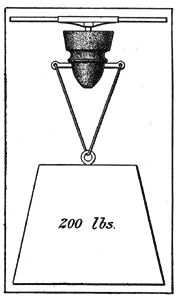[Trade Journal]
Publication: Scientific American
New York, NY, United States
vol. 88, no. 9, p. 158-159, col. 3,1
A NEW INSULATING MATERIAL.
The gradually decreasing supply of gutta percha, and the expense of vulcanite, porcelain, and glass insulating materials, have prompted many inventors to devise compositions which will fulfill the rigorous requirements imposed by the transmission of electrical energy at high voltages. Of the many new insulating materials which have been introduced of late is one which bears the name "Electrose," the invention of Louis Steinberger, of the Electrose Manufacturing Company, 127 North Tenth Street, Brooklyn, N. Y. Very careful and exhaustive tests of electrose made by experts in electrical engineering, would seem to show that the substance is a most admirable insulating material. The compound has been especially prepared to meet the requirements of electric railway, light, and power insulation. It is very hard, dense, tough, and strong, of a brownish hue, resembling somewhat that of certain varieties of oak. The compound is cast in the various forms which are required, so that the drilling and working necessary for some of the materials formerly used for electrical work are no longer necessary.
 |
| Test of An Electric Insulator. |
Elaborate tests which have been carried out by the engineer of the Niagara falls Power Company and by Prof. Sheldon, of the Brooklyn Polytechnic Institute, give some idea of the resistant qualities of this new material. The Niagara Falls engineer found that a cap with an embedded bolt arced across at 30,000 volts; a round-top, straight line hanger arced across at 11,000 volts; a square foot of the material one-quarter of an inch in thickness arced around at 80,000 volts; an 8-inch round column arced around at 100,000 volts; as did also an 8-inch hexagonal column. None of these specimens was punctured, with the exception of a ball insulator, which was punctured at 14,000 volts, the puncture being probably due to some mechanical defect.
In order to show that the round-top hangers of electrose fully meet the requirements of trolley line construction, Prof. Sheldon carried out the test, which is illustrated in the accompanying diagram. A round-top hanger was suspended, free from draft, in an inverted position by means of a bronze ear, weighing 8 ounces, and measuring 5 1/2 inches in length, the ear clamping the metal on a round rod of soft iron, one-quarter of an inch in diameter and 20 inches long. From the hanger top was suspended a weight of 200 pounds. A current of 200 amperes was passed continuously through the rod for one hour. The rod was thereby maintained at a red heat. This supply of heat, which is practically the same as would be given by a red-hot trolley wire of the same size in the same time, did not affect the electrose insulation to such an extent as to allow the 200 pounds weight to tear asunder the metal parts of the hangers. Prof. Sheldon tested a feeder insulator under a voltage of 70,000, but the insulation did not break down. Similar satisfactory results were obtained with cap and cone hangers, feeder insulators, globe strain insulators, solid bolts, terminal strain insulators and sheets.
The resistance of the substance to atmospheric influences and general wear renders it of great service for outside work. The substance is molded into many forms, and can be used as a general substitute for rubber, not only in electrical work, but in photographic and other work as well.
